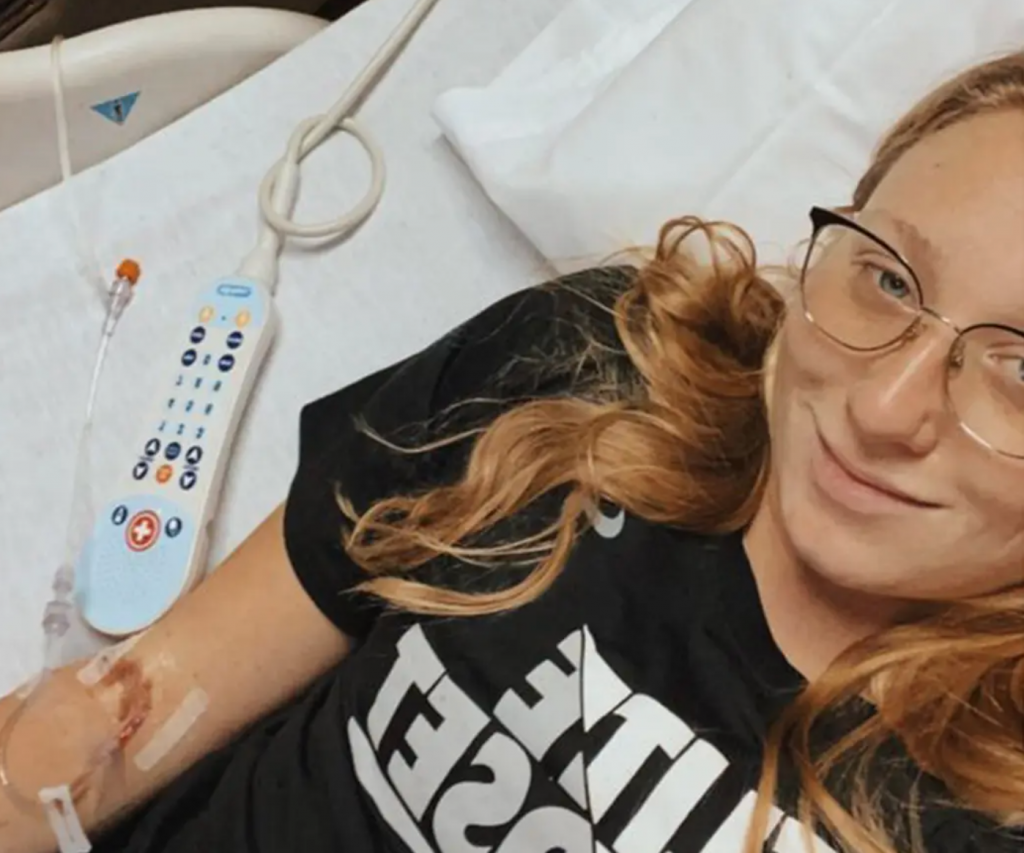Being Proactive About Her Health Saved Her From Cancer
- Iowa student athlete Helaina Hillyard, 20, noticed tiny, strange dots on her skin and had the area checked out. To her shock, she wound up getting diagnosed with leukemia, a type of blood cancer.
- The dots taking over her body was something called petechiae, which is a series of round spots on the skin that are caused from bleeding. Hillyard turned to TikTok to share her newfound knowledge of her disease and she wound up going viral as love and support poured in.
- The next steps after an AML diagnosis can largely depend on the age of the patient. If the person is younger, it's typically recommended they go through intensive inpatient chemotherapy because it's more likely they'll go into remission or even be cured.
Helaina was coming home from basketball practice last November, when she noticed the spots, which all of a sudden started getting larger and spreading out over her body over the course of a few hours. She immediately went to the emergency room, and her bloodwork came back off.
Read More@helainahillyard Turn of events :// #fyp #ope #didnotexpectthat #leukemia #godsplan ♬ Love You So – The King Khan & BBQ Show
Helaina’s ER doctor had said she was “extremely lucky” she hadn’t fallen while playing basketball, as she could have “easily suffered a brain bleed or internal bleeding."
After Helaina’s diagnosis, she immediately began blood transfusions and chemotherapy, which she received every 10 days.
"I never in a million years could think something like this could happen to anyone in my life, let alone myself," Helaina said.

"I wanted to show it's possible to try to keep a positive spin on things no matter how bleak things may seem," she said. "I received lots of different reactions. I unintentionally scared some people and worried some that their spots might be cancer, and they reached out to me with questions."
Better to be safe than sorry!
Learning About Leukemia
Taking in all the information there is to know about cancer after you've been diagnosed can be understandably overwhelming for many. However, learning all the ins and outs isn't always necessary right after your diagnosis, and instead just focusing on next steps can be the way to go.
The Next Steps After an Acute Lymphoblastic Leukemia ALL Diagnosis
Also, it helps to have a loved one or family member there to help talk through options. By talking to your physician, you'll be able to hear about the pros and cons concerning both inpatient and outpatient treatment. While inpatient treatment typically leads to better results, the patient may have concerns about staying in a hospital for up to six weeks.
Ultimately, it's important that you as a patient receive all the information about next steps so you can make an informed decision.
Related: After an AML Diagnosis, Knowing Your Risk Group is Important for Treatment
By talking to your physician, you'll be able to hear about the pros and cons concerning both inpatient and outpatient treatment. While inpatient treatment typically leads to better results, the patient may have concerns about staying in a hospital for up to six weeks. Ultimately, it's important that you as a patient receive all the information about next steps so you can make an informed decision.
What is a cancer of the blood? These cancers such as leukemia, lymphoma, and multiple myeloma, are cancers that primarily affect the bone marrow, the area in your bones where new blood cells are produced.
Dr. Nina Shah, hematologist at UCSF, summarizes blood cancers by explaining, "One cell got really selfish and decided that it needed to take up all the resources of everybody else, and in doing so, took up space and energy from the rest of the body.
What is a Blood CancerHow is it Different?
Because they effect the bone marrow, blood cancers are different than solid tumors like those of the lung, prostate, and breasts. When you have a blood cancers like multiple myeloma something goes wrong with each blood cell type produced in the bone marrow:
- Red blood cells: The cancerous blood cells for multiple myeloma crowd out healthy red blood cells or inhibit the production of new red blood cells. This causes anemia due to low red blood cell counts.
- Platelets: The production of platelets is hindered by the presence of cancerous plasma cells in the bone marrow. Without functioning and sufficient platelets, the body cannot properly form blood clots to stop bleeding. Symptoms include random nose bleeds and bruises.
- White blood cells: In multiple myeloma, cancerous plasma cells grow uncontrollably in the bone marrow and crowd out other functioning white blood cells. As a result, the immune system can't function properly, increasing the risk of infection and causing fatigue.
Learn more about SurvivorNet's rigorous medical review process.

